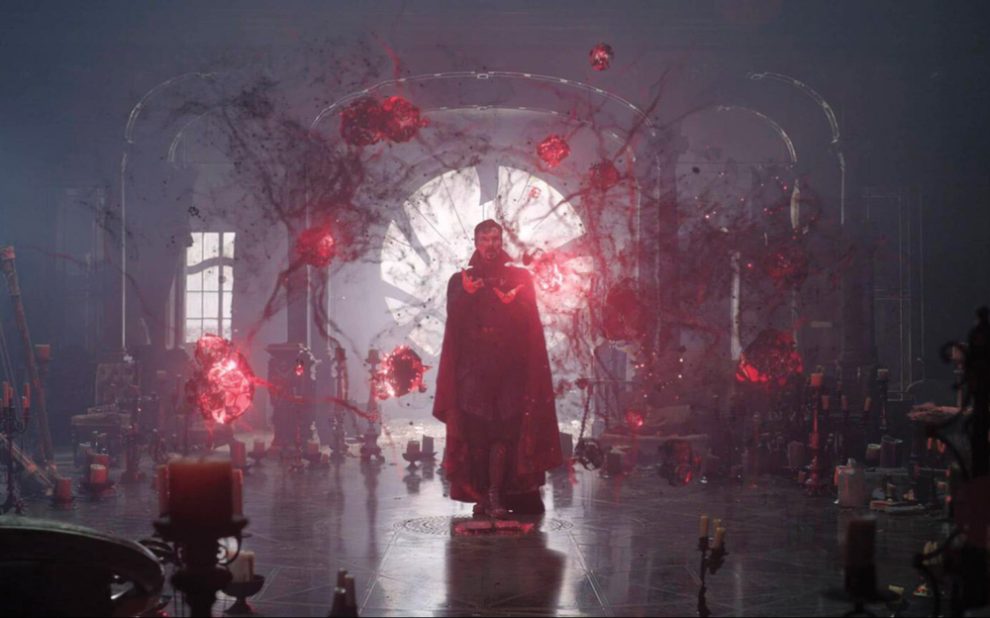Certain scientific concepts can capture the public’s imagination and take on a life of their own. This is commonplace in science fiction where time travel, the endless potential of black holes, and travel at the speed of light seem normal. Often these stories don’t delve into scientific details and are more “fiction” than “science.” They even inspire new generations to pursue scientific careers.
A current theoretical concept has Peter Parker exclaiming with bedazzled wonder, “The multiverse is real?!” in Spider-Man: No Way Home. This multiverse sensation isn’t limited to comic book movies but also reaches into popular art house films such as Everything Everywhere All at Once. Without delving too deep into the science, the idea of multiple universes existing at once with infinite possibilities and iterations has captivated writers and filmmakers. And it has done something increasingly elusive—sold movie tickets!
The visually stunning potential is undeniable. Whatever a filmmaker can imagine from the grandiose to the offensive is fair game when every possibility is a reality in some universe somewhere. Whether it’s Doctor Strange being chased by Scarlet Witch through one spiraling portal after another and glimpsing far-flung universes or Evelyn Wang jumping from one version of herself to another in a match cut tunnel of flashing lights, the visual results are impressive as filmmakers attempt to picture something completely new. Many people may simply be drawn to this baroque spectacle that borders on the visually gluttonous. Others are drawn to something else, some new potential that speaks to a deeper longing or unrealized hope. But what is that?
Before diving headlong into the cultural reception of the concept of a multiverse, it may be helpful to acquaint ourselves a bit with the theoretical concept itself. For scientific laypeople like many of us, with an interest in new discoveries and perhaps a fascination with the counterintuitive world of particle physics, the multiverse may be as intriguing as black holes or dark matter.
A good introduction to this rarefied world of research and speculation is the exceptional documentary Particle Fever, which follows physicists at the European Organization for Nuclear Research’s Large Hadron Collider in Geneva, Switzerland as they search for the elusive Higgs boson. While that may sound exceedingly detailed and rarefied (which it is), the filmmakers do an excellent job of finding physicists who can translate their theories into common language. Years and years of research and experimentation have led to a point where finding this possible “final piece” in the standard model of subatomic particles and understanding its properties, they think, will either validate a theory known as “supersymmetry” or lead in the direction of a multiverse. Physicists in the film equate supersymmetry with “beauty, harmony, and order,” creating a wider context in which the standard model fits.
The multiverse, on the other hand, proposes “chaos and randomness on a much larger scale” where everything is a “random accident.” Tellingly, they found that discovering the Higgs boson raised more unexpected questions and didn’t provide easy answers to their theories. Intriguingly, the Large Hadron Collider recently started again after a few years of upgrades, so the search for answers to big questions continues.
As you can likely see, this research is a far cry from Doctor Strange jumping through portals and is more about understanding the basic building blocks of nature and the conditions of the universe shortly after the big bang. Nevertheless, the idea that particles could interact with other universes stirs imaginations and opens a deluge of speculation, much of it highly philosophical.
Our hearts are restless until they rest in in you, O God.
St. AugustineAdvertisement
But, as is often the case, as captivating as theories and ideas are, experience and emotion provide the deeper motivation. Underneath all this universe jumping in film and popular media may be less physics and more psychology. As Scarlet Witch plainly asks Doctor Strange, “If you knew there was a universe where you are happy, wouldn’t you want to go there?” Even amid the chaos and nihilism of Everything Everywhere All at Once is the idea that access to other universes can lead us to a better version of ourselves where “happiness” is attainable.
Of course, what constitutes happiness then becomes the real question. Is it the attainment of wealth, power, and prestige? Is it access to endless novelty and excitement? When presented in this way, the multiverse in these stories doesn’t present anything new. It shows us people looking for happiness and fulfillment beyond this universe because they can’t find it here. St. Augustine would likely not be surprised by this. His search for happiness and fulfillment led him in all directions before he arrived at his famous conclusion, “Our hearts are restless until they rest in you, O God.”
That in no way is meant to be dismissive of human longings or curiosity about the mysteries of the universe, or even universes, that surrounds us. Scientific discoveries can be fascinating and lead in all kinds of directions. What will the particle collisions at the Large Hadron Collider reveal about nature? So many of us are excited to find out! But whether it’s particle physics, philosophy, or theology, we might want to be careful about being too confident in our conclusions. Scientists often propose larger conceptual frameworks for their discoveries and then say, “This is it, no more.” Philosophers and theologians can do likewise. In the process we not only make humanity small, but we make God small.
Every discovery reveals something about God’s imagination, and we have yet to discover even a small fraction of this universe. Just how grand and expansive God’s imagination is, I suspect, will be a source of infinite wonder. If multiple universes exist, there will be no shortage of theories and speculation about them. Without actual study of these other universes, we would be speaking beyond the data to make definitive statements and conclusions about their nature. For theologians, multiple universes may have the beautifully humbling effect of causing them to exclaim, “God is bigger than we thought!” And truly, God is always wonderfully much bigger than we imagine.
This article also appears in the October 2022 issue of U.S. Catholic (Vol. 87, No. 10, pages 36-37). Click here to subscribe to the magazine.
Image: Marvel














Add comment